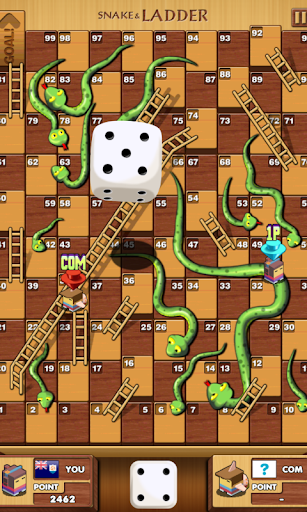Images















Introduction
Snakes and Ladders is an ancient Indian board game regarded today as a worldwide classic. It is played between two or more players on a gameboard having numbered, gridded squares. A number of "ladders" and "snakes" are pictured on the board, each connecting two specific board squares. The object of the game is to navigate one's game piece, according to die rolls, from the start (bottom square) to the finish (top square), helped or hindered by ladders and snakes respectively.The game is a simple race contest based on sheer luck, and is popular with young children. The historic version had root in morality lessons, where a player's progression up the board represented a life journey complicated by virtues (ladders) and vices (snakes).
How to
Each player starts with a token on the starting square (usually the "1" grid square in the bottom left corner, or simply, off the board next to the "1" grid square) and takes turns to roll a single die to move the token by the number of squares indicated by the die roll. Tokens follow a fixed route marked on the gameboard which usually follows a boustrophedon (ox-plow) track from the bottom to the top of the playing area, passing once through every square. If, on completion of a move, a player's token lands on the lower-numbered end of a "ladder", the player must move the token up to the ladder's higher-numbered square. If the player lands on the higher-numbered square of a "snake" (or chute), the token must move down to the snake's lower-numbered square.
If a player rolls a 6, the player may, after moving, immediately take another turn; otherwise play passes to the next player in turn. The player who is first to bring their token to the last square of the track is the winner.
A variation exists where a player must roll the exact number to reach the final square to win. Depending on the particular variation, if the roll of the die is too large the token either remains in place or goes off the final square and back again. For example, if a player requiring a 3 to win rolls a 5, they would move forward three spaces and then back two again. In certain circumstances (such as a person requiring a 1to win rolling a 6), a player can end up further from the final square after this move than before it.
Related Applications
Users Also Installed
































